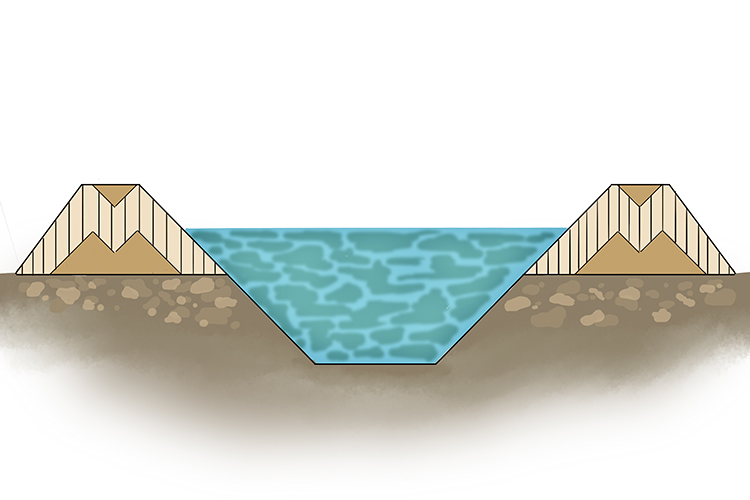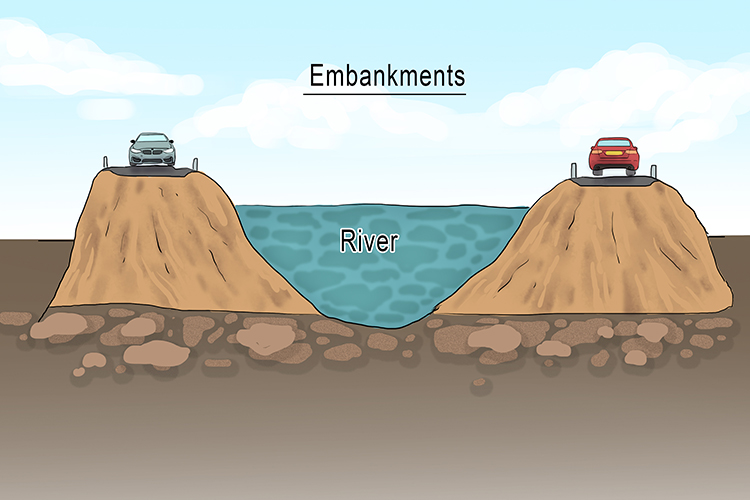Embankments – Raised banks along the river; they effectively make the river deeper so it can hold more water
They are expensive and do not look natural but they do protect the land around them.
Difference between embankments and levees:
- An embankment can hold water and often supports a road or railroad.
- A levee is usually only used to prevent flooding.
To remember the meaning of the term Embankments, use the following mnemonic:
The "M" on the bank is meant (embankment) to protect the land by holding more water.


Embankments are hard engineering projects designed to prevent flooding when river levels rise above normal bank height. The advantage is that a stretch of river can hold more water without flooding of adjacent land or property.
The disadvantages of embankments include the high cost of building them and their visual effect on the riverscape.
Experience also shows that if an embankment fails, the subsequent flooding can happen very quickly, with less time for preparation than if flooding had occurred more gradually without an embankment in place.
Clay is often used on the outside of embankments to make them impermiable to water, while sand is often used in the middle.




